In the intricate tapestry of our planet’s biodiversity, insects hold a unique and often breathtaking place. Their stunning colors, intricate patterns, and astonishing adaptations make them some of the most remarkable creatures on Earth. In this exploration of nature’s living jewels, we will dive into the captivating journey to discover the 30 most beautiful insects in the world.
These tiny wonders come in a dazzling array of forms, each with its own captivating story of evolution, survival, and, above all, aesthetic splendor.
From the aptly named Picasso Bug, adorned with vibrant, abstract markings, to the elusive Glasswing Butterfly, nearly invisible in flight, these insects reveal the boundless creativity of Mother Nature.
As we dive into their world, we’ll uncover remarkable adaptations, from mimicry that confounds even the keenest observers to vivid displays of color that warn predators or enchant potential mates. Whether camouflaged as leaves, dressed in ethereal hues, or adorned with metallic brilliance, these insects showcase the awe-inspiring diversity and beauty that thrives in the microcosm of the insect kingdom.
Join us on this enthralling odyssey as we celebrate the 30 most beautiful insects in the world that grace our planet with their presence, reminding us of the enchanting wonders hidden in plain sight.
30 Most Beautiful Insects in the World
1. Picasso Bug
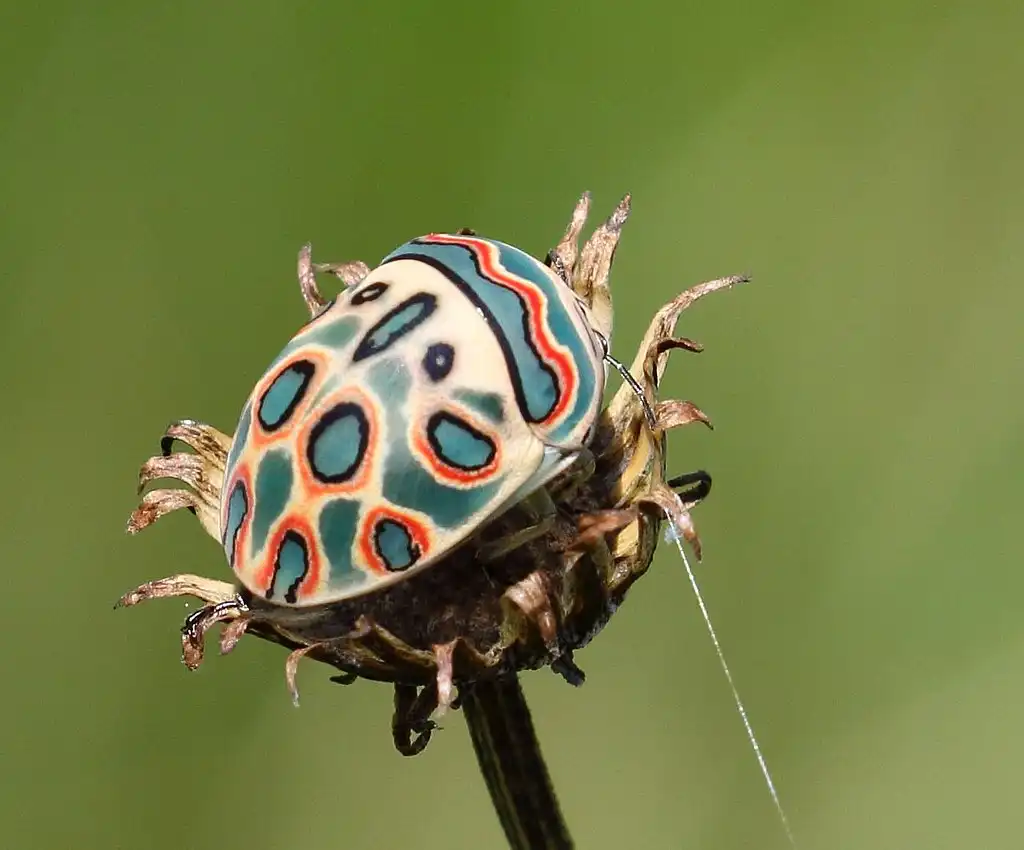
Scientific Name: Sphaerocoris annulus
Origin: Tropical Africa
Interesting Facts:
- The Picasso Bug, also known as Zulu Hud Bug, showcases a stunning artwork on its back resembling the famous artist’s abstract paintings.
- These bugs are native to Africa and sport a vibrant mix of red, yellow, and black patterns that mimic Picasso’s unique style.
- Interestingly, the Picasso Bug’s colorful appearance serves as a warning sign to potential predators, signaling its toxicity.
2. Harlequin Filefish
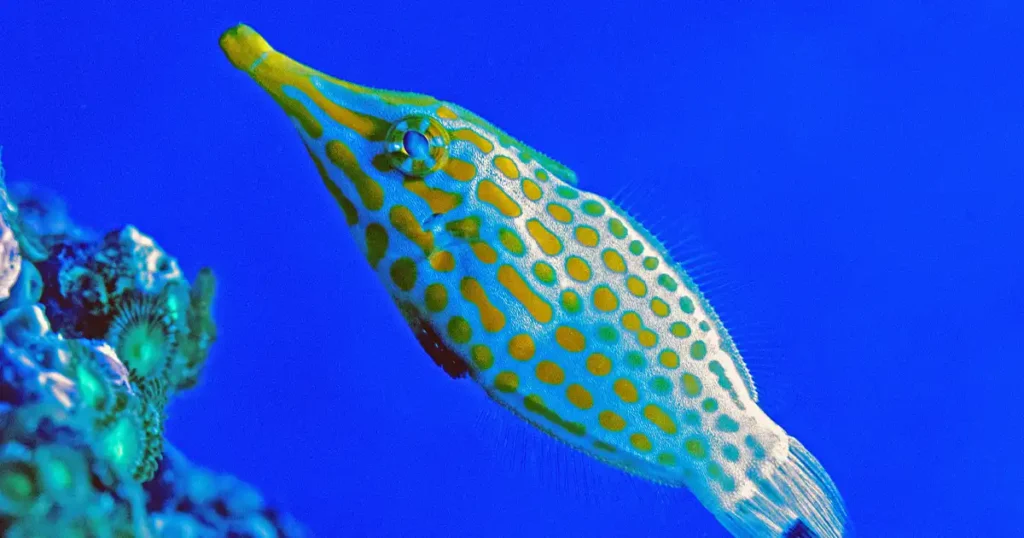
Scientific Name: Pervagor melanocephalus
Origin: Tropical Indo-Pacific
Interesting Facts:
- The Harlequin Filefish boasts a mesmerizing ability to change colors, much like a chameleon, adapting to its surroundings and mood.
- They have a peculiar, elongated snout that resembles a tiny vacuum cleaner, which they use to suck up small prey like tiny crustaceans and invertebrates.
- This remarkable fish’s color-changing prowess not only helps it hide from predators but also communicate with other filefish.
3. Jewel Caterpillar
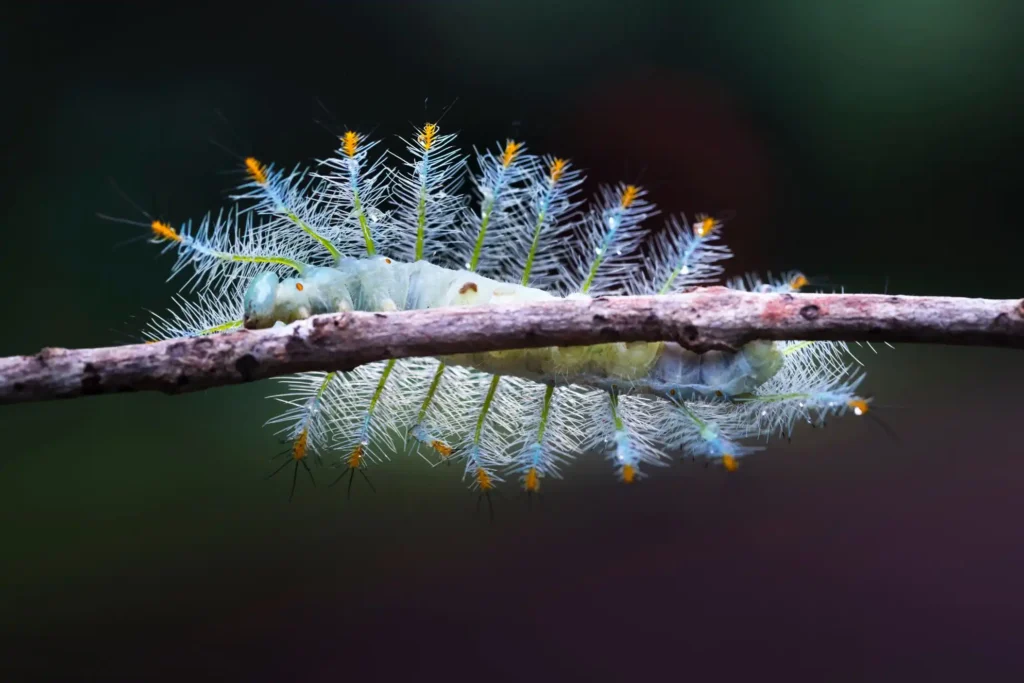
Scientific Name: Acraga coa
Origin: Central and South America
Interesting Facts:
- The Jewel Caterpillar looks like a translucent, living droplet of honey or a tiny, magical creature encrusted with gemstones.
- Covered in a gooey, jelly-like substance, this caterpillar camouflages itself with bits of twigs and leaves, making it almost invisible to predators.
- As it transforms into a moth, it sheds its glittering exterior, leaving behind a more typical appearance.
4. Hummingbird Moth
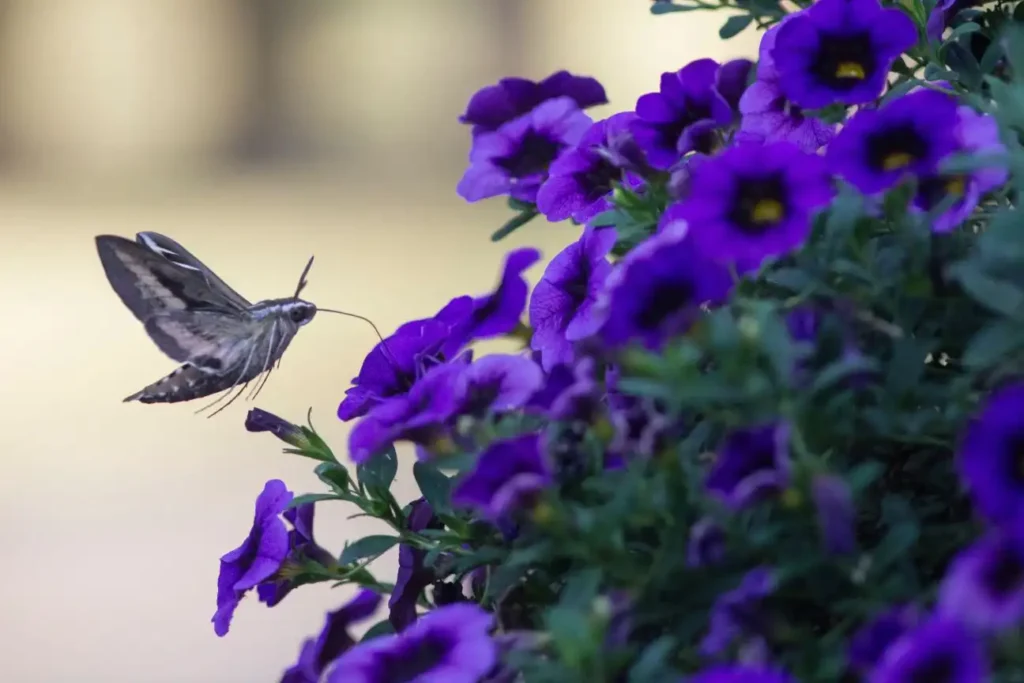
Scientific Name: Hemaris spp.
Origin: North America, Africa, Europe, and Asia
Interesting Fact:
- The Hummingbird Moth exhibits a striking case of mimicry, imitating a hummingbird’s appearance and behavior while being a moth.
- With rapid wing beats and hovering capabilities, it hovers over flowers, sipping nectar with its long, straw-like proboscis.
- This moth’s uncanny resemblance to a hummingbird has even fooled experienced birdwatchers.
5. Green Milkweed Locust
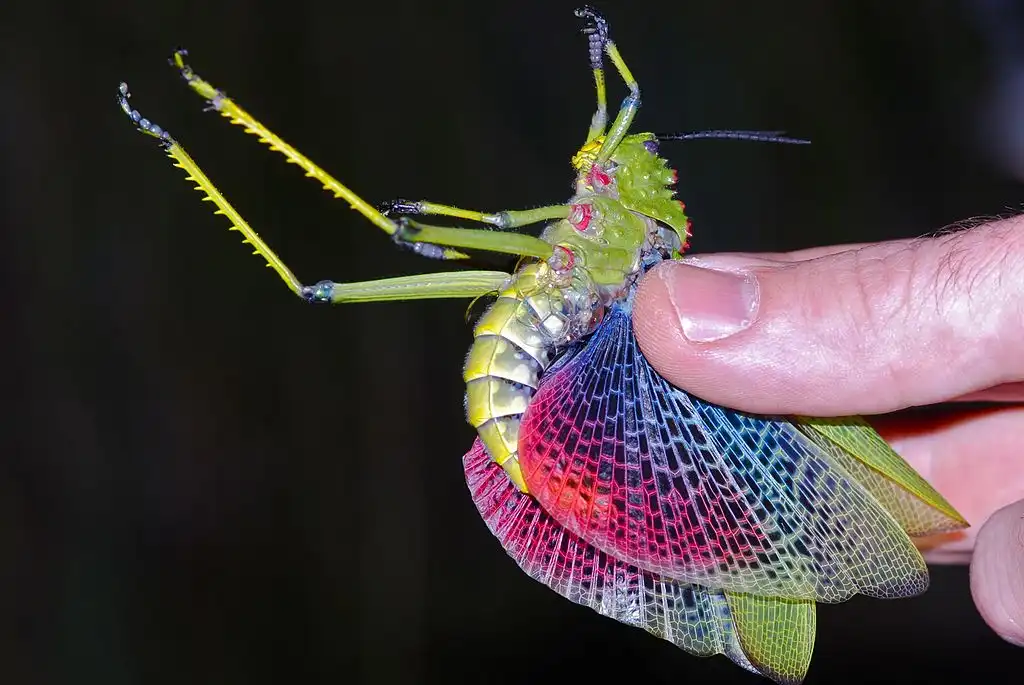
Scientific Name: Phymateus viridipes
Origin: Southern Africa
Interesting Facts:
- The Green Milkweed Locust flaunts brilliant green coloration and is a master of mimicry, resembling a leaf with its veiny patterns.
- It has a peculiar habit of consuming milkweed, which is toxic to most animals, making the locust itself unpalatable to predators.
- As they mature, their green coloration fades, and they transform into striking black and orange adults.
6. Golden Birdwing Butterfly
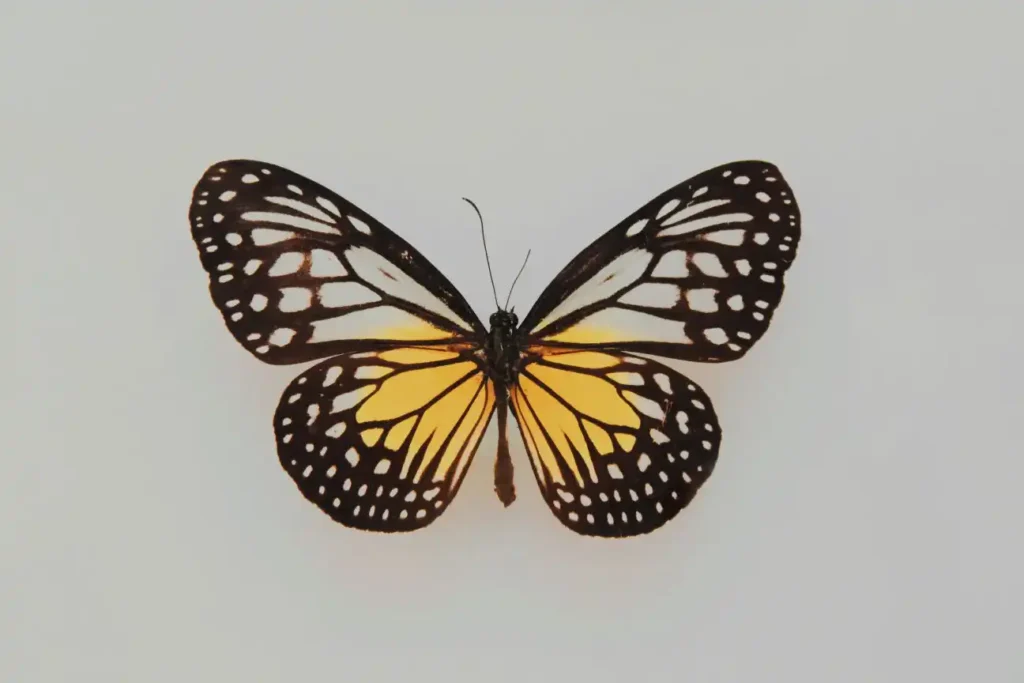
Scientific Name: Troides Aeacus
Origin: Southeast Asia
Interesting Facts:
- The Golden Birdwing Butterfly is one of the largest butterflies in the world, with wingspans reaching up to 8 inches.
- It displays an astonishing metallic golden color on its wings, making it look like a shimmering treasure as it glides through the rainforests of Southeast Asia.
- These butterflies are not only breathtaking but also essential pollinators for the region’s diverse plant life.
7. Gray’s Leaf Insect
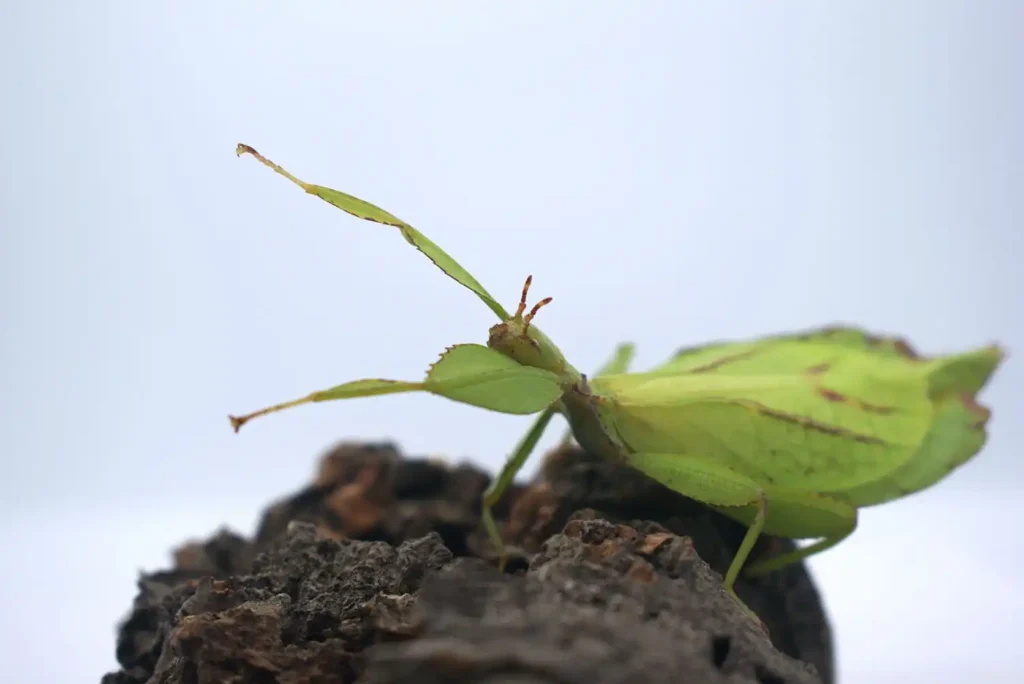
Scientific Name: Phyllium bioculatum
Origin: Southeast Asia
Interesting Facts:
- Gray’s Leaf Insect is a master of camouflage, resembling a dead, dried leaf with its elongated body, veiny appearance, and brownish coloration.
- When threatened, it sways gently like a leaf in the wind, further enhancing its disguise.
- Females are flightless and resemble leaves more closely, while males have wings, but both genders excel at staying hidden from predators.
8. Rosy Maple Moth
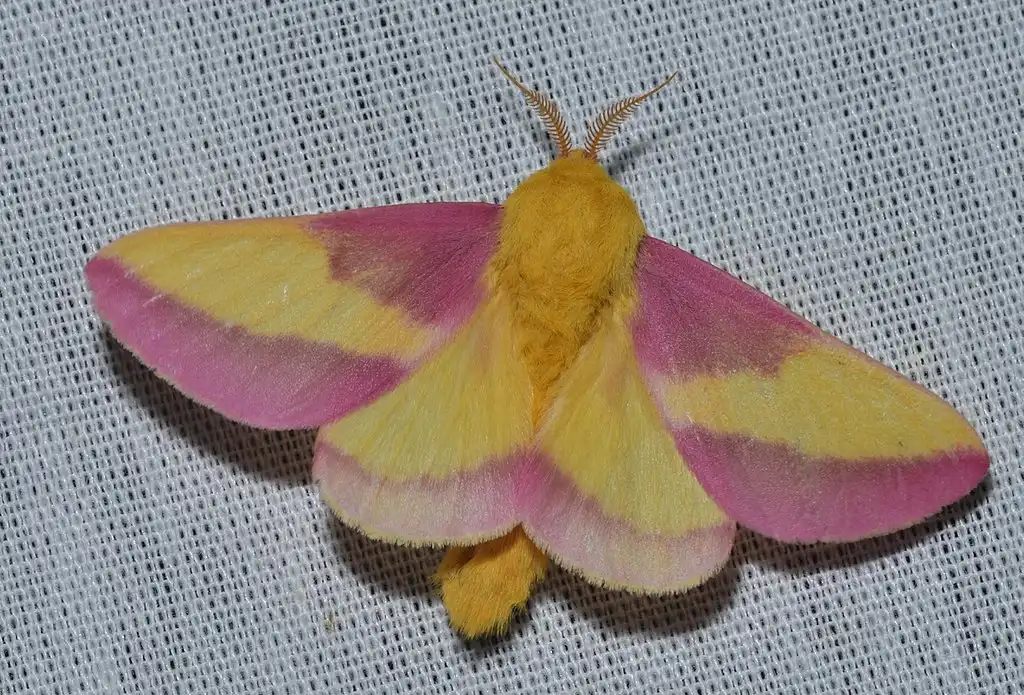
Scientific Name: Dryocampa rubicunda
Origin: North America
Interesting Facts:
- The Rosy Maple Moth looks like it just stepped out of a fairy tale with its cotton candy-pink wings and a touch of yellow.
- Its appearance is so enchanting that it’s often referred to as the “unicorn of moths.”
- Despite its stunning looks, this moth is primarily nocturnal and rarely seen during the day.
9. Coastal Peacock Spider
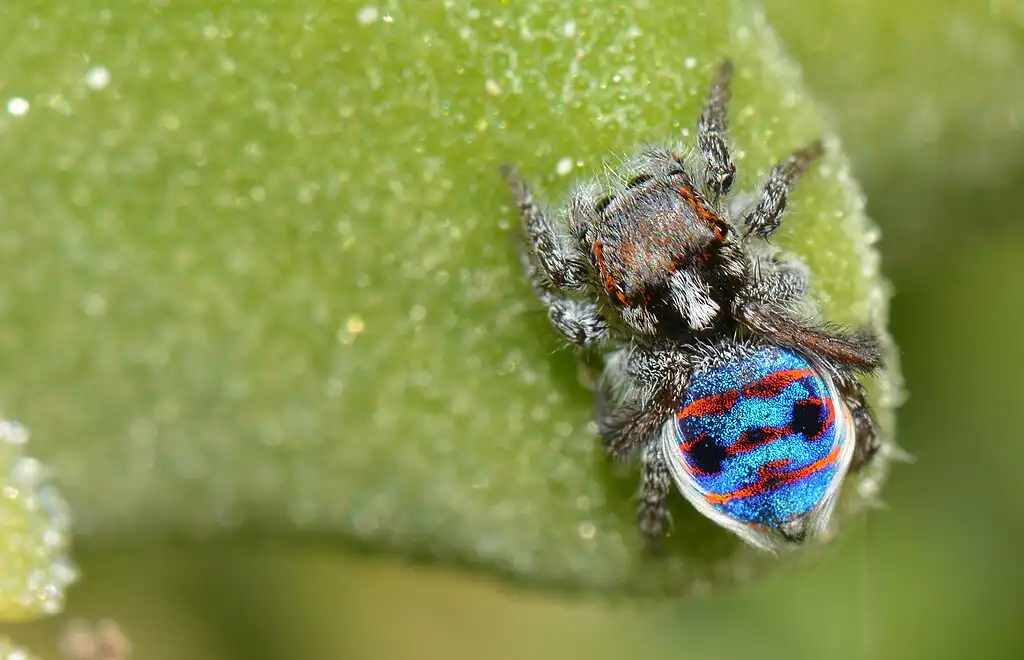
Scientific Name: Maratus speciosus
Origin: Southern Australia
Interesting Facts:
- The Coastal Peacock Spider is a tiny wonder of nature, measuring only a few millimeters in size.
- Males perform intricate dance routines to court females, displaying their vibrant, iridescent abdomen to woo potential mates.
- These spiders are native to Australia and are named after the stunning peacock-like display they put on during their courtship rituals.
10. Golden Tortoise Beetle
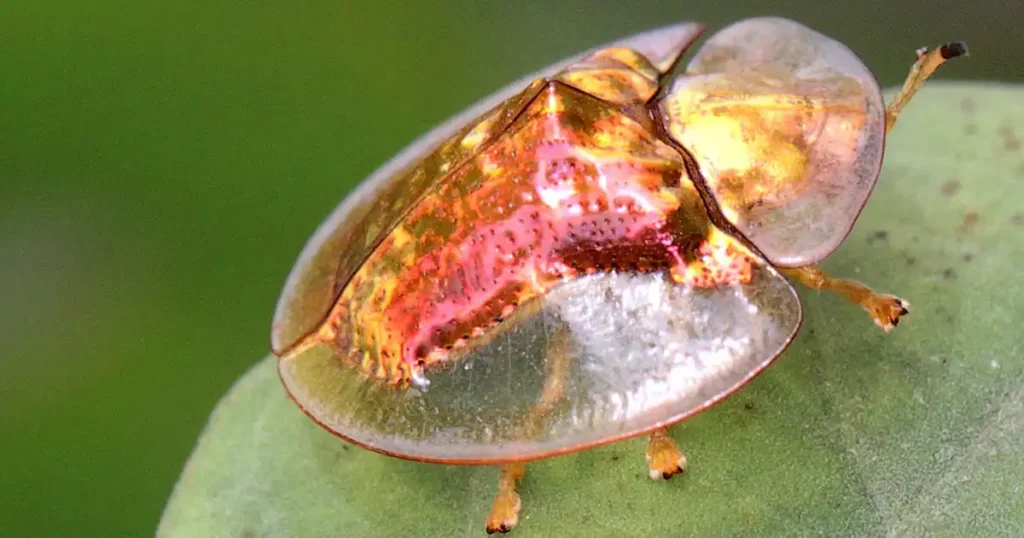
Scientific Name: Charidotella sexpunctata
Origin: North and South America
Interesting Facts:
- The Golden Tortoise Beetle gets its name from its round, flattened shape resembling a tortoise shell.
- What’s truly mind-blowing is its ability to change color, shifting from shiny gold to a more subdued reddish-brown when disturbed.
- It’s not just a visual marvel; these beetles have evolved this color-changing ability for protection.
11. Io Moth Caterpillar
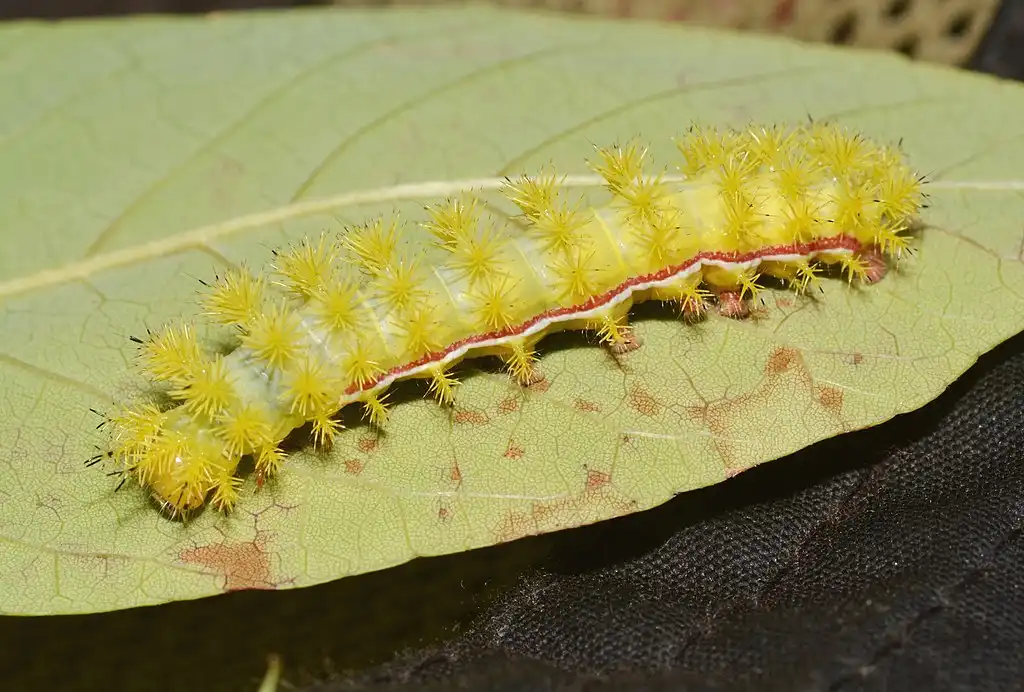
Scientific Name: Automeris io
Origin: North America
Interesting Facts:
- The Io Moth Caterpillar sports striking colors, with a vibrant green body adorned with bold, eye-catching spines.
- Hidden beneath these spines are toxic bristles that can cause severe irritation and pain if touched.
- It’s a reminder that beauty in nature often comes with a warning label.
12. Blue Morpho Butterfly
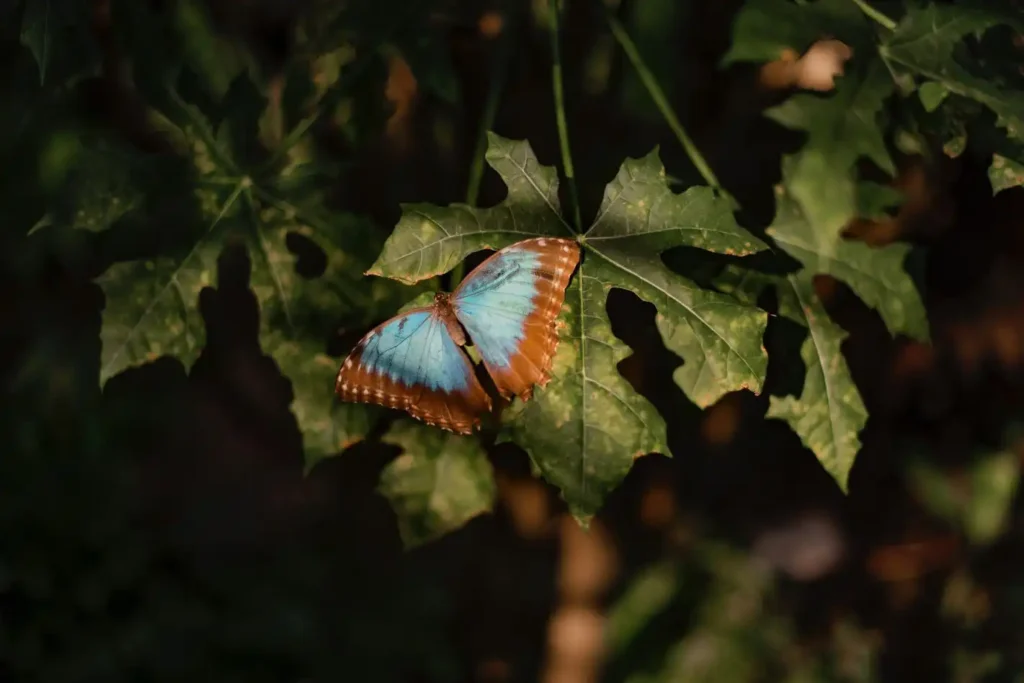
Scientific Name: Morpho Menelaus
Origin: South and Central America
Interesting Facts:
- The Blue Morpho Butterfly’s wings are a dazzling iridescent blue, reflecting light in a way that appears to make them glow.
- Surprisingly, this intense blue color is not due to pigments but results from microscopic scales on their wings that refract light.
- When these butterflies take flight, they create a breathtaking spectacle in the rainforests of Central and South America.
13. Gooty Sapphire Tarantula
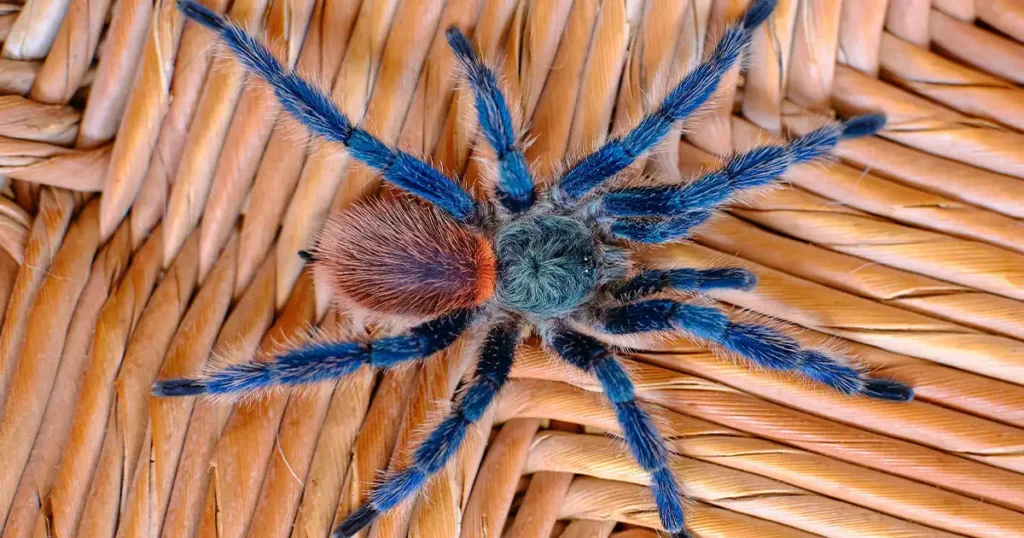
Scientific Name: Poecilotheria metallica
Origin: India and Sri Lanka
Interesting Facts:
- The Gooty Sapphire Tarantula is renowned for its electrifying cobalt-blue body, making it one of the world’s most beautiful arachnids.
- It’s an arboreal tarantula, often dwelling in tree hollows and crevices, and rarely ventures to the forest floor.
- Despite its stunning appearance, this tarantula is venomous, serving as a reminder that beauty can sometimes be deadly.
14. Red Speckled Jewel Beetle
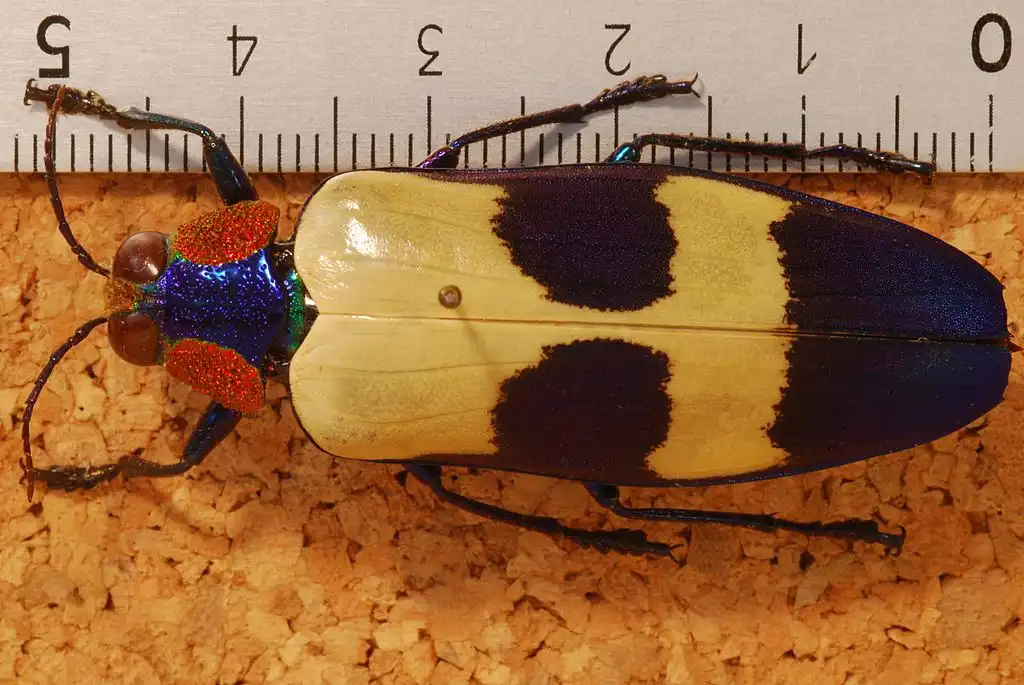
Scientific Name: Chrysochroa Buqueti
Origin: Thailand
Interesting Facts:
- The Red Speckled Jewel Beetle, native to Southeast Asia, is like a living gem with its vivid metallic green and red-speckled elytra.
- Its iridescence is a result of light interference, where the structure of its exoskeleton interacts with light to create these brilliant colors.
- These beetles are highly sought after by collectors due to their stunning appearance.
15. Luna Moth
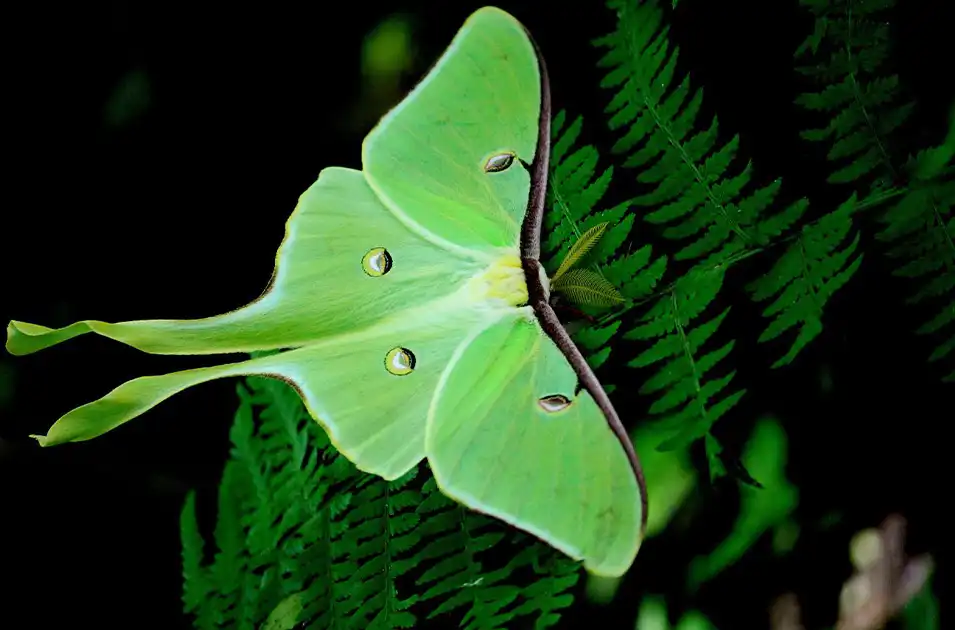
Scientific Name: Actias luna
Origin: North America
Interesting Facts:
- The Luna Moth is an ethereal creature with delicate, pale green wings and long, elegant tails, resembling a mystical forest spirit.
- With a lifespan of only about one week as an adult, they primarily exist to find a mate and lay eggs.
- The Luna Moth’s fleeting beauty is a reminder of the ephemeral nature of life in the natural world.
16. Orchid Bee
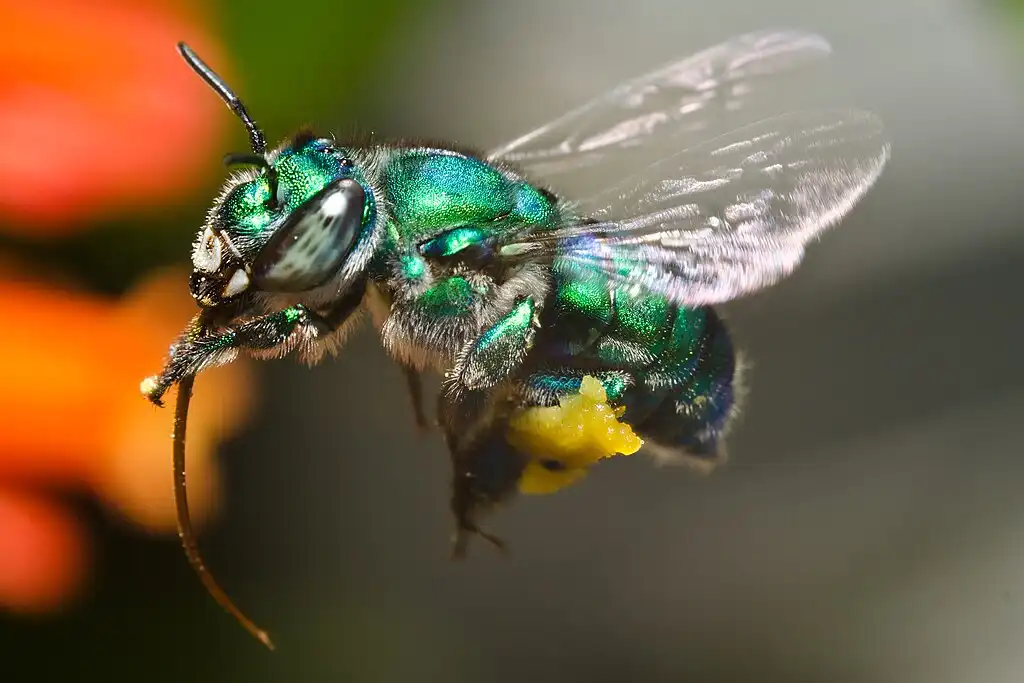
Scientific Name: Euglossini (tribe)
Origin: Central and South America
Interesting Facts:
- Orchid Bees are nature’s iridescent jewels, with their dazzling metallic colors and intricate patterns.
- They play a vital role in pollinating orchids, forming a mutually beneficial relationship with these exquisite flowers.
- Orchid Bees have been known to visit and pollinate orchids as far as 30 kilometers away from their nests.
17. Atlas Moth
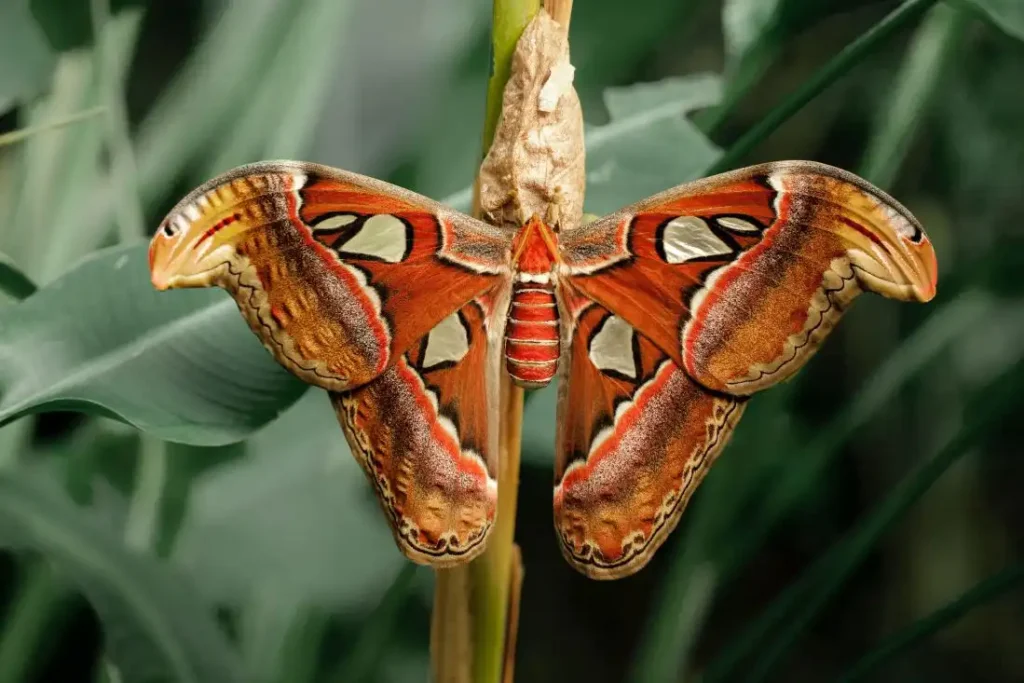
Scientific Name: Attacus atlas
Origin: Southeast Asia
Interesting Facts:
- The Atlas Moth holds the title of being the world’s largest moth in terms of wingspan, which can reach up to 12 inches.
- Their wings are adorned with striking, transparent “windows,” which resemble maps or charts and lend them their name.
- Despite their imposing size, Atlas Moths have no mouthparts and do not eat as adults, focusing solely on reproduction.
18. Glasswing Butterfly
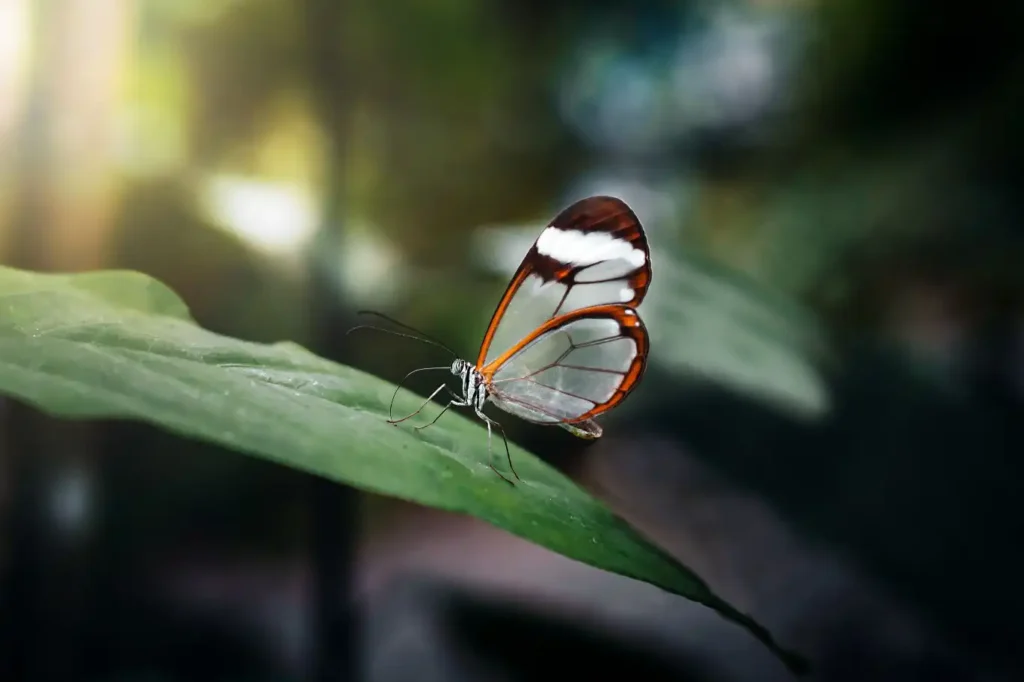
Scientific Name: Greta oto
Origin: Central and South America
Interesting Facts:
- The Glasswing Butterfly is like a living stained glass window, with almost transparent wings that make it seem almost invisible in flight.
- It’s not just a pretty sight; it’s also a cunning survival strategy to avoid predators.
- These butterflies are found in Central and South America and are known for their mystical appearance.
19. Ladybug
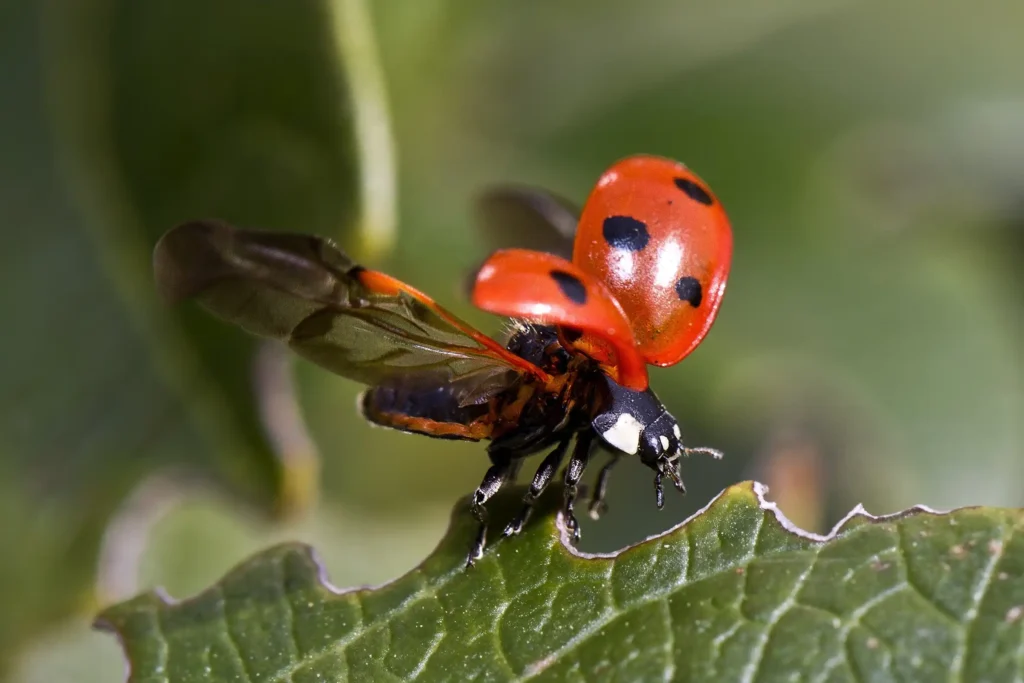
Scientific Name: Various species in the Coccinellidae family
Origin: Worldwide
Interesting Facts:
- Ladybugs, or ladybirds, come in various colors and patterns, but the most iconic is the red shell with black spots.
- These tiny beetles are considered symbols of good luck and are often associated with wishes coming true.
- Ladybugs are also voracious predators, feeding on aphids and other garden pests, making them beneficial to agriculture.
20. Rajah Brooke’s Birdwing Butterfly
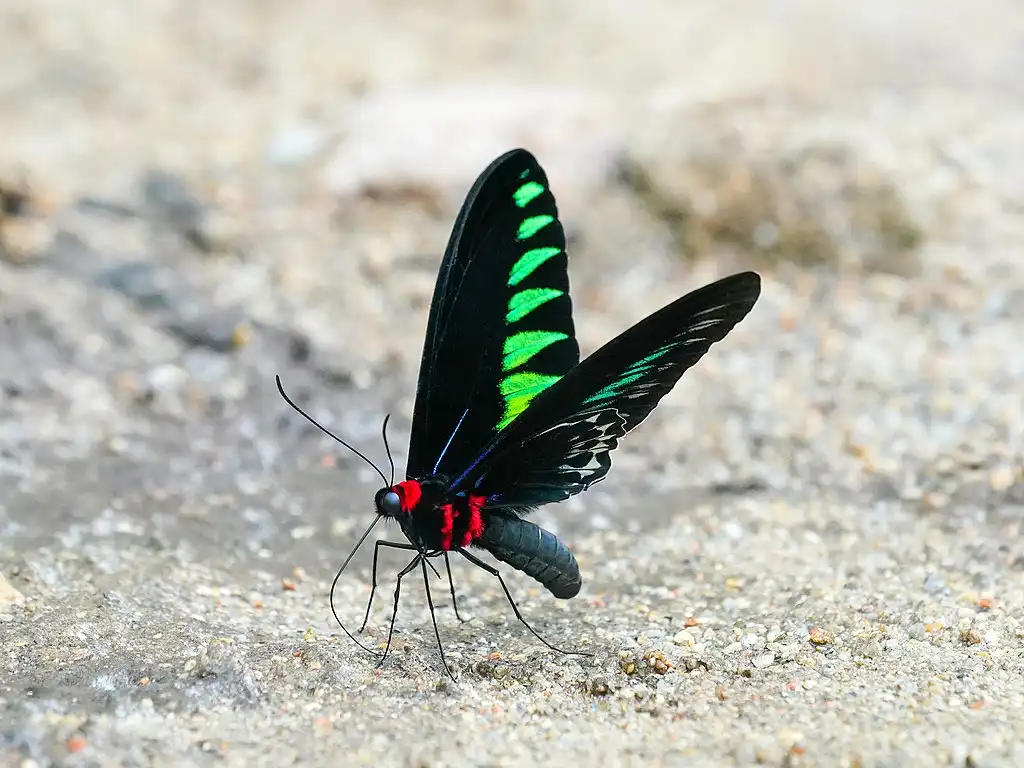
Scientific Name: Trogonoptera brookiana
Origin: Southeast Asia
Interesting Facts:
- Rajah Brooke’s Birdwing Butterfly is a stunning insect with velvety black wings accented by striking emerald-green bands.
- Named after Sir James Brooke, the first White Rajah of Sarawak, these butterflies are native to Southeast Asia.
- They are known for their graceful flight and are a sight to behold in the lush rainforests they call home.
21. Scarlet Macaw Butterfly
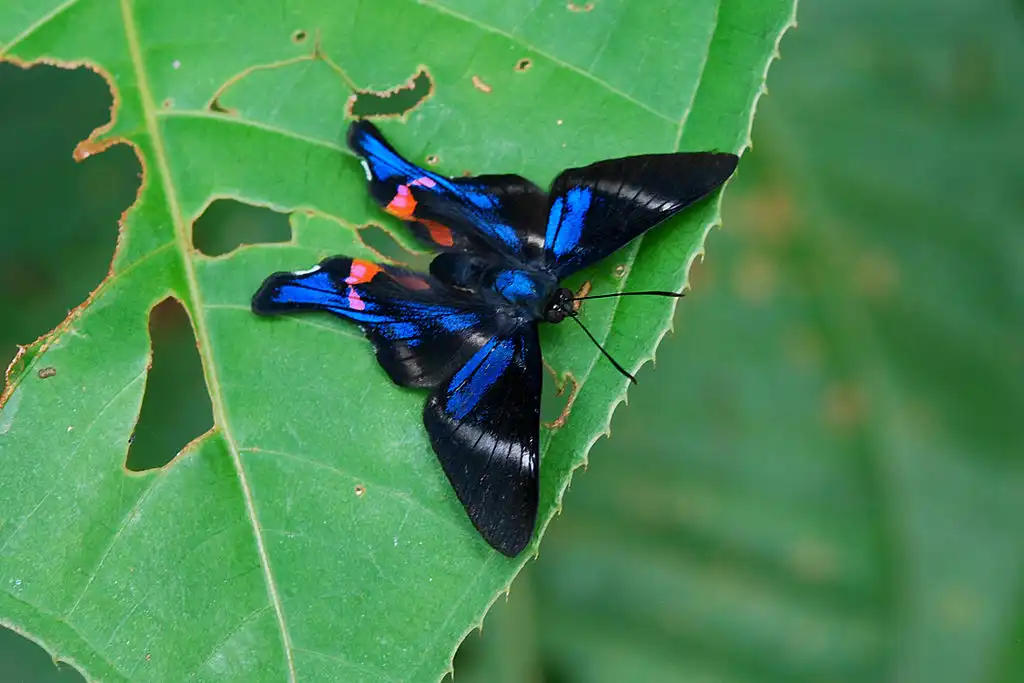
Scientific Name: Rhetus Periander
Origin: Central and South America
Interesting Facts:
- The Scarlet Macaw Butterfly, found in Central and South America, has wings that perfectly mimic the vibrant plumage of its namesake, the scarlet macaw bird.
- Its mimicry is so convincing that it even has a distinctive “eye” spot on its wings, resembling the macaw’s eye.
- This ingenious disguise helps deter potential predators.
22. Orchid Swallowtail Butterfly
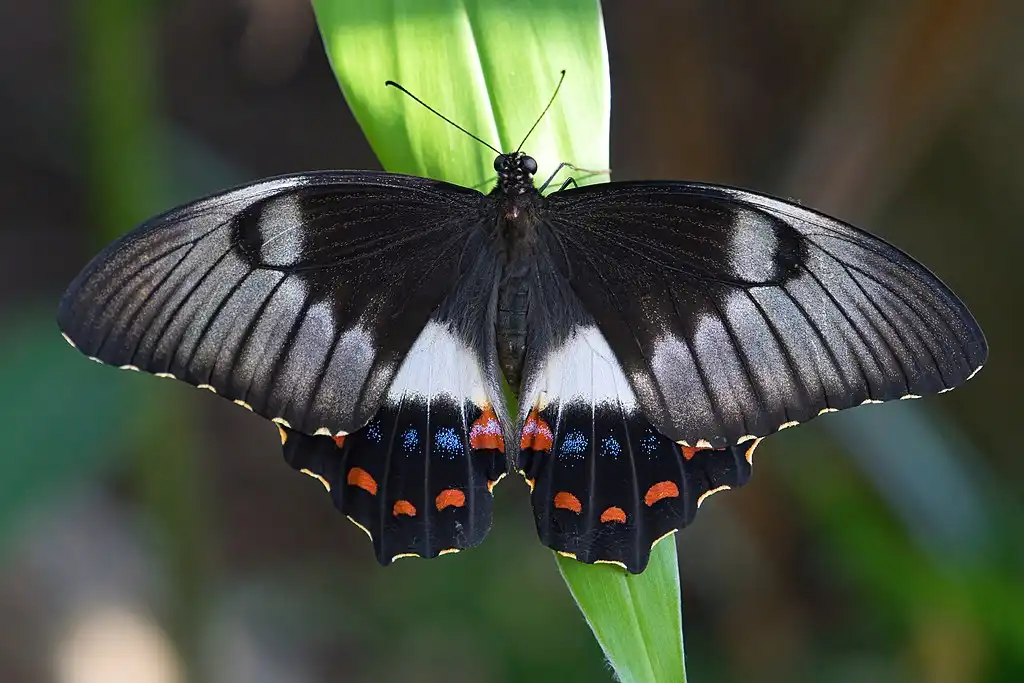
Scientific Name: Papilio maackii
Origin: East Asia
Interesting Facts:
- The Orchid Swallowtail Butterfly is aptly named for its preference for orchid nectar, but it also lays its eggs on citrus trees.
- Its wings showcase a stunning combination of dark hues and iridescent blue and green shades.
- Interestingly, the male Orchid Swallowtail has a distinctive “swallowtail” tail on its hindwings, while the female lacks this feature.
23. Sunset Moth
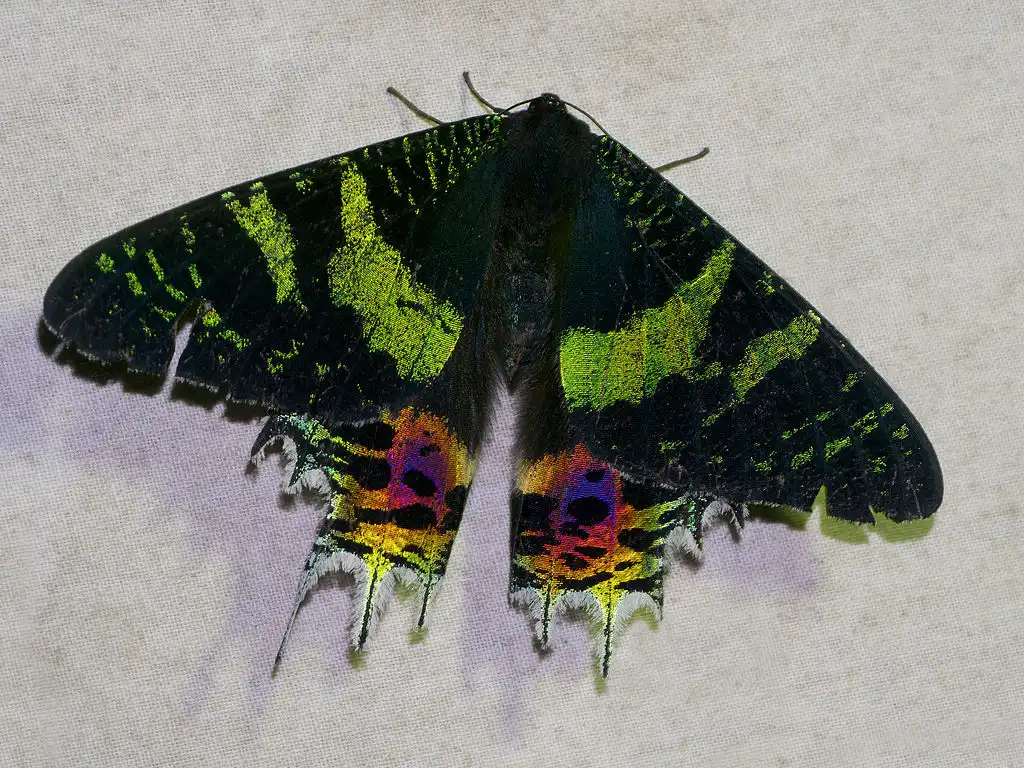
Scientific Name: Chrysiridia Rhipheus
Origin: Madagascar
Interesting Facts:
- The Sunset Moth is a small, yet spectacular, moth found in Madagascar.
- Its wings display a stunning array of colors, including shades of red, orange, green, and blue, making it look like a tropical sunset in flight.
- These moths are highly sought after by collectors for their mesmerizing beauty.
24. Green Dragontail Butterfly
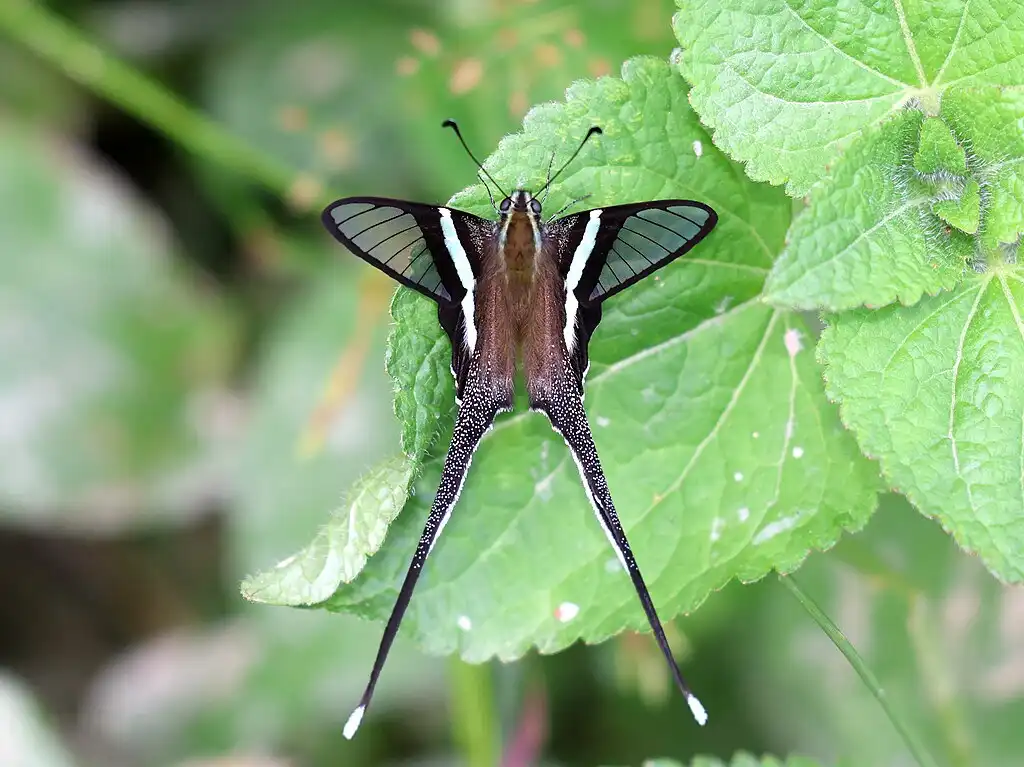
Scientific Name: Lamproptera meges
Origin: Southeast Asia
Interesting Facts:
- The Green Dragontail Butterfly is a tiny gem of the butterfly world, with emerald-green wings and two delicate “tails” that resemble dragonfly wings.
- They are known for their swift, erratic flight patterns, making them challenging to capture in flight.
- These butterflies are found in Southeast Asia and are often associated with good luck and prosperity.
25. Regal Moth
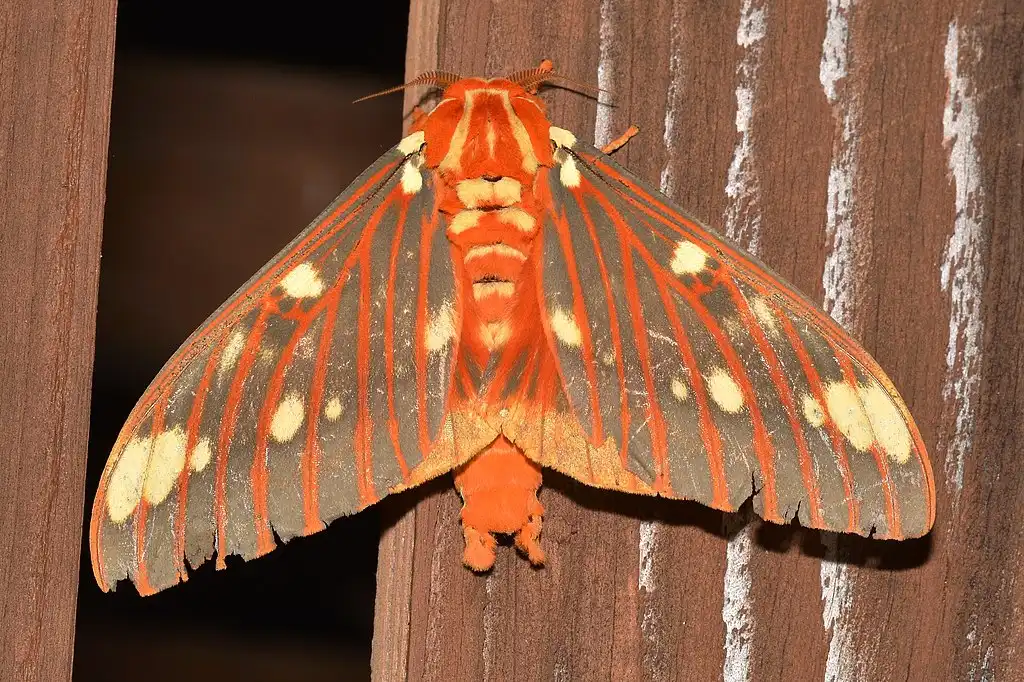
Scientific Name: Citheronia Regalis
Origin: North America
Interesting Facts:
- The Regal Moth, also known as the Hickory Horned Devil, is one of the largest and most striking caterpillars in North America.
- Covered in intimidating-looking spines, it transforms into a regal adult moth with impressive black and white patterns.
- Despite its imposing appearance, the Regal Moth is harmless to humans.
26. Goliath Beetle
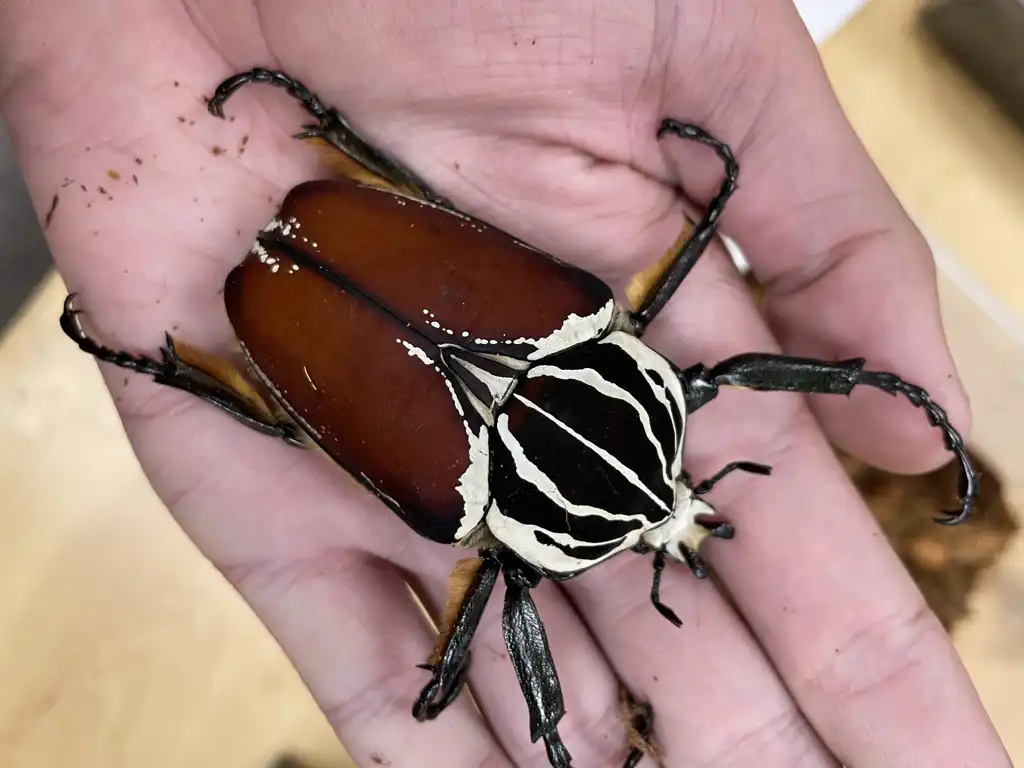
Scientific Name: Various species in the Goliathus genus
Origin: Africa
Interesting Facts:
- The Goliath Beetle is aptly named, as it’s one of the largest beetles in the world, with some individuals reaching lengths of 4 to 4.5 inches.
- Males have distinct Y-shaped horns on their heads, which they use in competitions with other males for territory and mates.
- These massive beetles are found in parts of Africa and are prized by collectors for their immense size and beauty.
27. Orchid Mantis
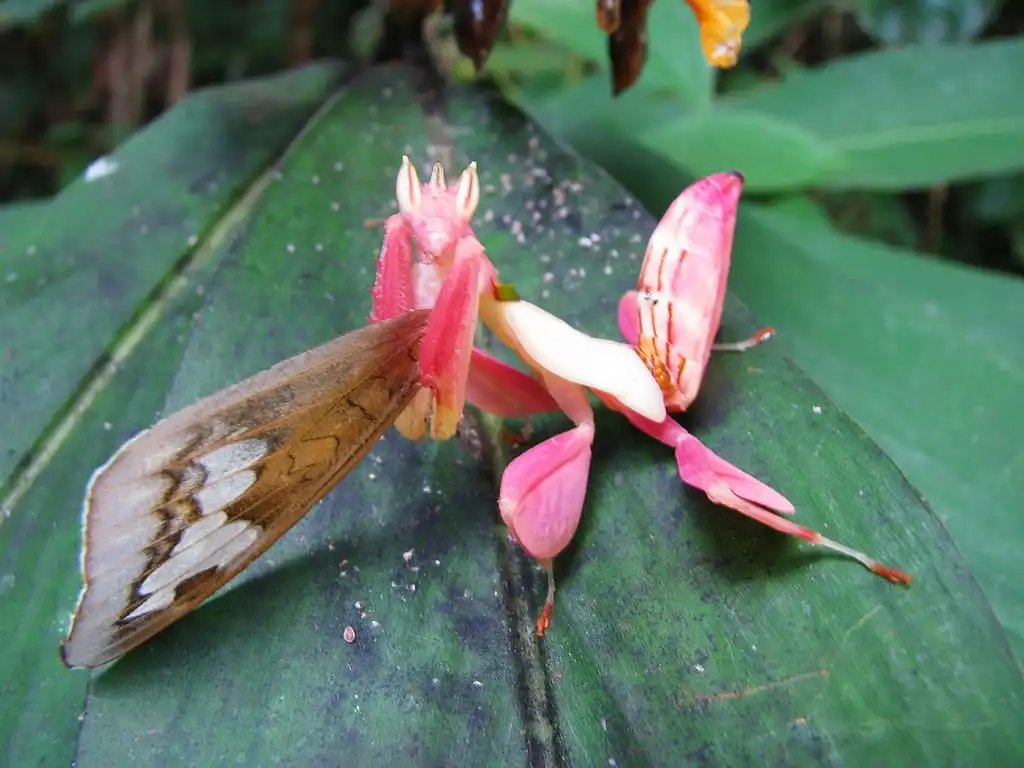
Scientific Name: Hymenopus coronatus
Origin: Southeast Asia
Interesting Facts:
- The Orchid Mantis is a true master of disguise, resembling a blooming orchid flower with its pink or white coloration and petal-like limbs.
- They use their floral mimicry to lure unsuspecting prey, such as bees and butterflies, into their clutches.
- This cunning ambush predator is a testament to the wonders of natural mimicry.
28. Cuckoo Wasp
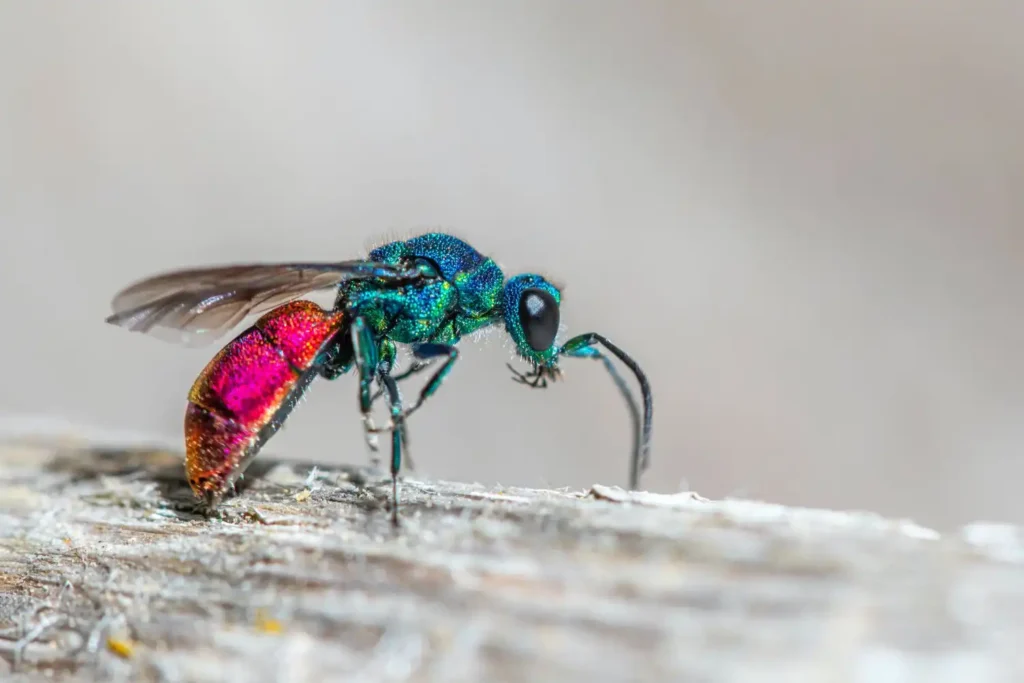
Scientific Name: Chrysis spp.
Origin: Worldwide (except Antarctica)
Interesting Facts:
- Cuckoo Wasps are known for their striking metallic hues, often exhibiting an iridescent blue or green coloration.
- They are called “cuckoo” wasps because, like the cuckoo bird, they lay their eggs in the nests of other wasps or bees.
- These wasps are parasites, with their larvae feeding on the host’s offspring.
29. Thorn Bug
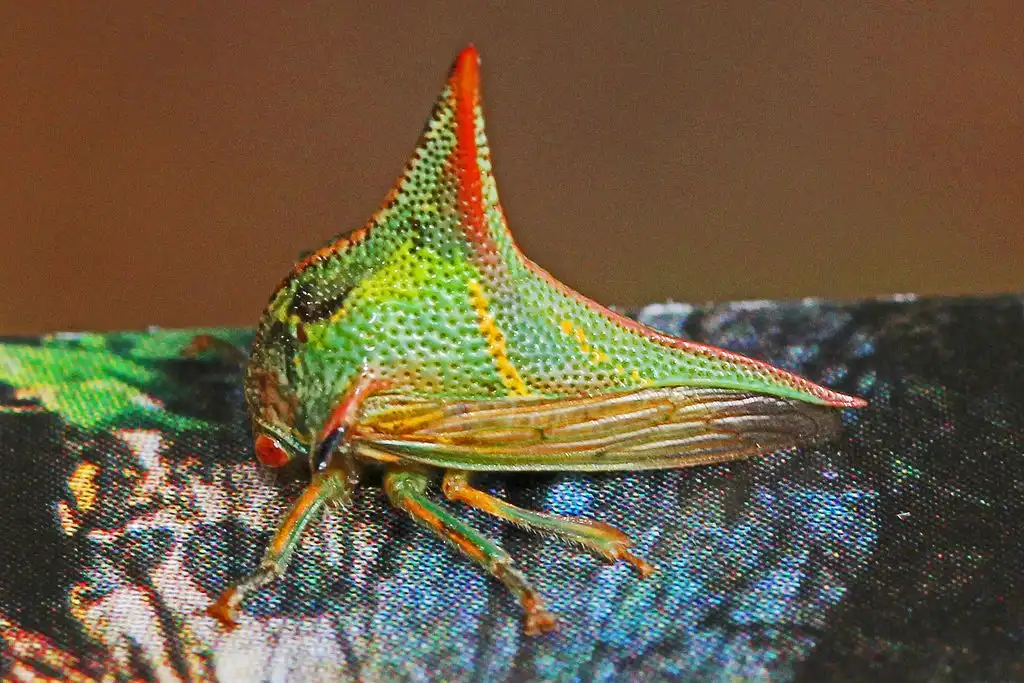
Scientific Name: Umbonia crassicornis
Origin: South and Central America, Mexico
Interesting Facts:
- Thorn Bugs, also known as Thorn Treehoppers, have evolved to resemble thorns on plant stems.
- Their appearance is so convincing that they often go unnoticed by predators and even human observers.
- These tiny insects can display remarkable diversity in the shape and size of their thorn-like protrusions.
30. Spiny Flower Mantis
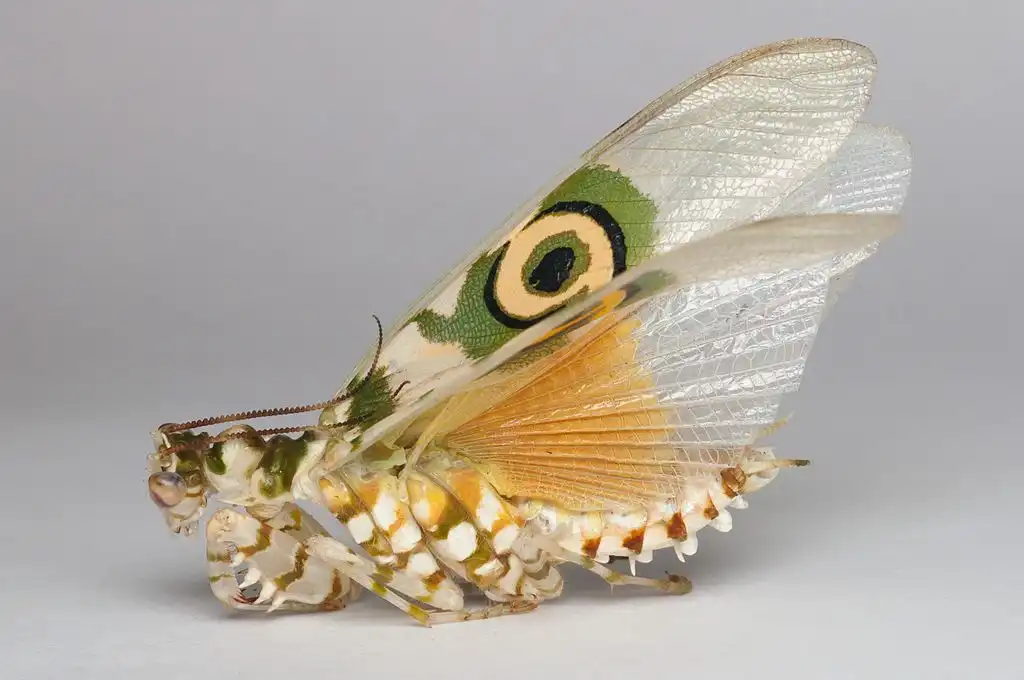
Scientific Name: Pseudocreobotra wahlbergii
Origin: Southern and eastern Africa
Interesting Facts:
- The Spiny Flower Mantis is a type of praying mantis with striking, spiky appendages that resemble thorns.
- They use their deceptive appearance to hide among flowers and ambush unsuspecting prey.
- These mantises come in various colors, from vibrant green to shades of pink and brown, making them even more intriguing to observe.
You may also like:
Conclusion
The world of insects is teeming with beauty, showcasing the remarkable diversity of life on Earth. From the delicate and ornate patterns of butterflies to the shimmering iridescence of beetles, these 30 most beautiful insects in the world captivate us with their stunning appearances.
Each of these creatures is a testament to the artistry of nature and serves as a reminder that beauty can be found in even the smallest and most unexpected corners of the natural world.



